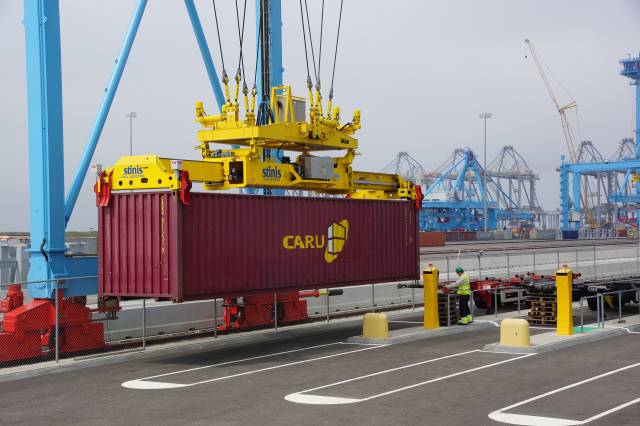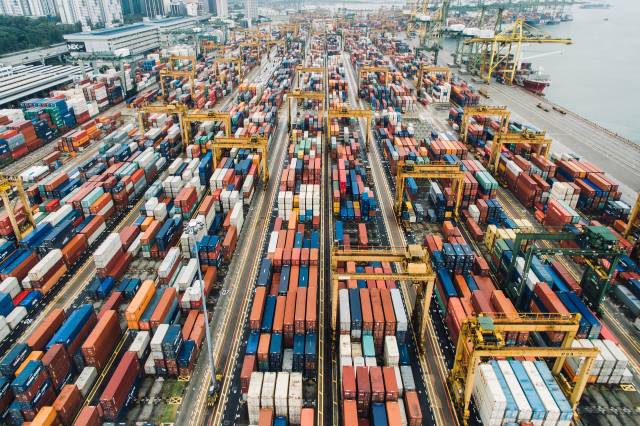How is technology improving the logistics industry?
European countries take the lead in the logistics sector, which has a volume of 7 trillion dollars worldwide. Turkey, which has made a breakthrough in recent years, is on its way to becoming an international logistics base thanks to new projects and investments.

The logistics industry in the world has shown a rapid development since the 1950s. Accordingly, EU countries completed their integration processes years ago and reached a leading position in the world. Turkey, on the other hand, completed the infrastructure works in the field of land, air, sea, rail and combined transportation with the investments made between 1980-1990 and continued to develop with the breakthroughs made after 1990.
Diversifying and specializing its services by taking similar practices in the world as an example, the logistics sector in Turkey completed its infancy in the 2000s and started to stand on its own feet. Now, Turkey has become a dynamic sector that cooperates with international companies in the field of logistics, opens offices abroad, and constantly increases its service quality. The logistics sector, which has shown great development in international markets in the last 10 years, also reflects positively on the Turkish economy.
Automation and information technology in the logistics sector
Technology and automation offer technologies that make life easier in the logistics sector, as in all areas of our lives. Specially developed software and smart applications in many areas such as the planning of goods movements, shipment, delivery, collection of goods, return goods, route planning, vehicle tracking make things easier. Operational costs of enterprises with information technologies decrease, customer satisfaction increases, competitiveness increases, and time and effort loss is prevented. The low cost and timely delivery of the produced service to the right point reveals the importance of the automation system. Processes such as the arrival of the products from the production stage to the warehouse, their classification here, and sending them to the store require time, attention and labor. If you have an automation system, the product is automatically tracked, classified and stored from the moment it enters the warehouse. Thus, the risk of making mistakes and the need for labor are eliminated, and you complete the operation much faster and in a short time. All these show that automation and information technologies are an important need that must be used in the logistics sector.

According to the new Road Transport Regulation prepared by the Ministry of Transport, Maritime Affairs and Communications, there are new provisions that will make digital transformation mandatory in road transport. All documents of cargo to be transported by road are required to be digitally recorded within 6 hours at the latest. Another important innovation on the subject is that the responsibility during transportation covers not only the company carrying the load, but also the company delivering the load. In such a case, institutions or organizations that carry cargo will have to prefer logistics companies with digital infrastructure in transportation operations. Thanks to online monitoring, which will be used in the logistics sector in the near future, it is foreseen that 100 billions of unregistered money will be brought into the economy. While processes are now controlled automatically thanks to the computer-aided systems used in logistics and transportation, autonomous driverless trucks, captainless ships, pilotless aircraft, deliveries with drones, and the transfer of processes to digital platforms with cloud technology are rapidly entering our lives. All these developments necessitate the development of Logistics 4.0 and its integration with industry and trade.

Drones will be used in warehouse counts
It is important to make the warehouse system properly in the transportation sector. It is said by the authorities that a system has been developed where drone cameras count the goods in the warehouse and record them in a certain order in order to be able to count the goods in the warehouses accurately and quickly, so that the employees have a lot of time to be busy with other works.
UPS uses VR glasses for education
UPS plans to train its employees to identify potential hazards on the road using virtual reality (VR) glasses. By using virtual reality glasses, catchy educational content is created, on the other hand, it is ensured that the couriers live the driving experience on the streets of the city.
Driverless trucks and unmanned ships on the way
Partially driverless controlled trucks have started test drive in the UK. Trial runs on the test tracks will take place on the main roads from the end of 2018. In order to minimize human-induced errors and costs, shipping companies are accelerating their work on unmanned ships. Japanese container firm Nippon Yusen said it will conduct unmanned ship testing in the Pacific in 2019.
The development of the logistics sector reveals new professions
With the integration of the logistics industry into technology and Industry 4.0, it is predicted that new professions will enter our lives in the next 10-15 years, while researches say that most of the professions made today will no longer exist in 2030 and beyond. Children starting primary school today will be working in new professions such as data logisticians, data mining, autonomous system controllers when they graduate from university. With the entry of Industry 4.0 into the sector, all processes in logistics undergo a radical change, and with the inclusion of robotics, a concern that people will lose their jobs inevitably begins to come to the fore. It cannot be ignored that technological revolutions will create significant effects in the field of employment as well as affecting production. However, as in the previous industrial revolutions, unemployment will not occur, on the contrary, new business lines and employment will be created by experts. It is stated that over time, with the effective use of technology in all logistics processes, employment may shrink in jobs that require muscle strength, but new lines of business and occupations will emerge, as well.
At this point, Emre Eldener, President of the Association of International Forwarding and Logistics Service Providers (UTIKAD), shared her views on the logistics sector and logistics centers in Turkey
Will Turkey be an international logistics base?
The public and private sectors produce realistic projects for the logistics sector. The preparation of the Turkey Logistics Master Plan (TLMP) project was initiated within the UDHB Railway Regulation General Directorate in order for Turkey to get a larger share from the logistics market with a volume of 7 trillion dollars worldwide and to become an international logistics base. There are 84 licensed warehouses, 1223 warehouses, 19 free zones, 466 small industrial sites, 298 OIZs, 28 freight ports/terminals and 20 logistics centers in Turkey. These centers are planned to be connected with the logistics centers that will be established in the future.
What is Turkey's logistics position in the world?
Turkey is a country located between the continents of Asia and Europe and has the position of a logistics base that can provide distribution and service to existing and potential markets in its strategic area. It is also a transit country for North African and Central Asian countries. Being on the most important energy routes of the world increases the operational power of Turkey in the logistics sector. It has one of the largest truck fleets in Europe and has an advanced road transport network with sufficient capital accumulation in land transport. Turkey, which is a candidate to be the logistics base of the region where Europe-Asia-Middle East and Africa meet, is a country where foreign capital companies compete with each other due to its growing economy and geographical superiority. In the field of logistics, foreign capital investment of 1.9 billion dollars was realized in Turkey between 2005 and 2015. Logistics constitutes 12 percent of Turkey's GDP. While the production and sales companies make up 85% of Turkey's current production and goods movement, the service cost ratio varies between 8-15% of the sales price.
At what stage are the combined transportation and logistics centers in Turkey?
Although there is a similar situation in EU countries, 90 percent of transportation in Turkey is done by road. However, in recent years, efforts have been made to activate the combined transportation as well. As UTIKAD, we also support combined transportation in every medium where logistics is discussed. Combined transport is the transport of goods in a single transport unit using at least two modes of transport, without the need for reloading. EU countries aim to shift 50% of transport to combined transport by 2050. We are working with all our means in order not to fall behind this system.
Is the logistics center project being implemented in Turkey?
Studies on logistics centers in Turkey were initiated by TCDD in 2007. A total of 20 logistics centers were planned. The logistics centers with the highest capacity are Halkalı and Köseköy Logistics Centers with a capacity of 2 million tons. Hasanbey Logistics Center is the logistics center with the highest construction cost with 117 million TL. There are two private logistics centers in Turkey, 17 affiliated to TCDD and one affiliated to AYGM. As UTIKAD, we published our Logistics Center Management – Establishment Methodology and Performance Indicators book, prepared by expert academics, in 2014, despite the danger of creating logistics centers with independent decisions of different public or private institutions, without a logistics master plan of our country, creating inefficient and idle capacities in the future.

